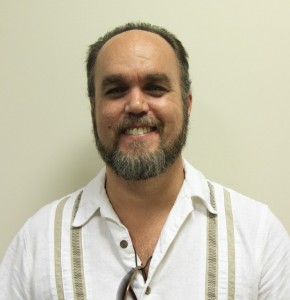 The first time I saw a stabbing victim was my second day in prison. I heard screams coming from the hallway, and then an officer came into view, dragging a prisoner by his shirt. The victim was moaning in pain and the officer was asking him who “stuck” him. I stood holding the bars, watching the scene with a kind of detachment that made it surreal. I was terribly frightened.
The first time I saw a stabbing victim was my second day in prison. I heard screams coming from the hallway, and then an officer came into view, dragging a prisoner by his shirt. The victim was moaning in pain and the officer was asking him who “stuck” him. I stood holding the bars, watching the scene with a kind of detachment that made it surreal. I was terribly frightened.
Over the next 24 years I had a lot of other scary experiences; too many to count. In a way I became used to them, or at least learned to repress the fear. I haven’t experienced much fear since I got out of prison in 2009, not beyond the usual fears of daily life. That changed a few weeks ago though, and it was all because of the teenagers.
I have been doing some teaching work at a high school near where I live in north Georgia. The initial idea was to share communication skills and strategies for resolving conflict more effectively. The kids had issues with various aspects of the school system: attendance, performance, altercations with other students and teachers. The school brought my colleague and me in to help the kids have a better chance of success in school, and perhaps even in life.
I had a lot of ideas about what to teach. I know what works, what connects to people’s basic needs and desires. Not only does it work, it is empowering. Knowing these skills is a way to get what we want, and who isn’t interested in that? These are skills that everybody wants, or at least I thought they were. Now I am not so sure.
I was in the middle of an extremely interesting (to me at least) exercise about how we respond to conflict. There are basically five different styles, and it pays to know which ones we, and others, are using. This concept can be represented spatially, using two axes. One represents self-interest, and the other represents investment in relationship. As I was sharing this with the kids, they showed their interest in different ways. Some began conversations with their peers, some began to look at their phones, and some lay their heads on the desks and closed their eyes. Things were not going as well as I had hoped.
I began to feel afraid. Here I was trying to do the work I feel called to do, wanting to share something that might help these kids to achieve something in life besides unemployment, poverty, and maybe even prison or death, and I was failing miserably. My partner noticed that we had forgotten a handout we wanted to share, so I quickly volunteered to go get them, seizing the opportunity to escape from my increasing fear.
Going to the office and back was about a 10-minute walk, and as I came back down the hill I took the opportunity to calm down and connect with my own intentions. I noticed the tension I was carrying in my body, born of my fear, and I reflected on all of times I had been in really dangerous situations. I have had people threaten to kill me, and knew that they meant it. I reminded myself that I wasn’t in that kind of danger.
Instead it was fear of not connecting with these kids, of what could happen to them without the skills we were offering. It was a fear of not being able to connect with them in a way that would lead them to listen to me. They were good at blocking out adult voices, they do it all day long, and I didn’t want them to do that with me.
By the time I was back at the classroom door I was calm and even energized. I entered, not knowing what would happen, but willing to see. If what we tried worked, then we would keep doing it. If it didn’t, we would stop. The main thing was that we wouldn’t give up on them.
I think this attitude is vital to dealing with young people. If I want to do this work then I have to be ready to adapt my delivery, to try new things, and to engage them where they are in the moment. Too often adults give up on kids who are “difficult.” It is easy to write them off as unable or unwilling to learn and grow, but this just isn’t true. Usually we don’t move forward because we, the adults, don’t know exactly what to do. This isn’t a good enough reason to stop though, and I can’t fool myself into thinking that it is.
As a colleague once told me, “Anything worth doing is worth doing poorly.” If I have to do things poorly before I can do them well, then I will. There’s nothing to be afraid of.
